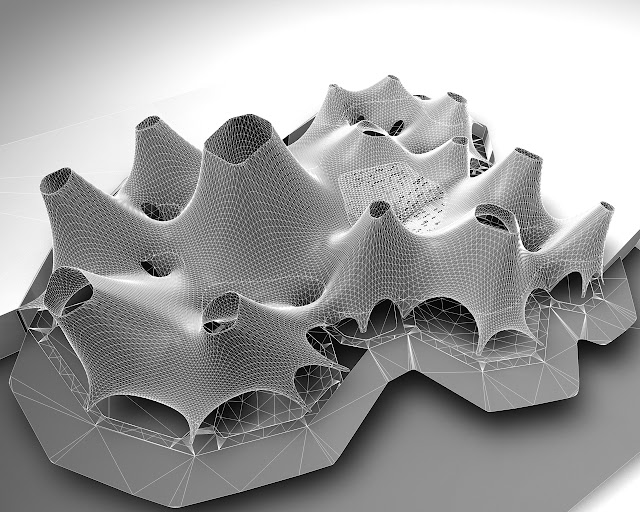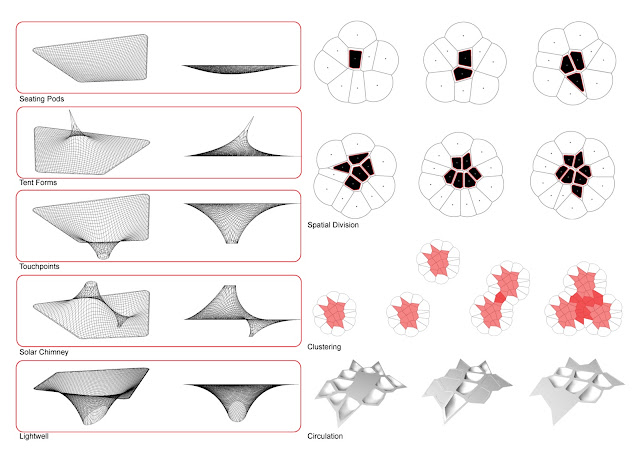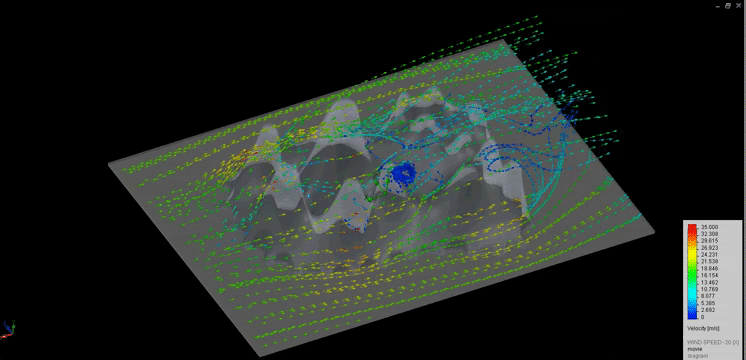A pseudo code for the final design proposal was written in the form of a flowchart. To enable the application of the material system on different sites and conditions, digital models have to be simulated for testing purposes. A digital algorithm that allows for recursion is needed to produce different iterations to constantly re-evaluate the generated outcome. Within the intelligence algorithm the material behaviour of the system and the possible spatial limitations have to be taken
into consideration.
Since fluidity of the transition between static architectural elements is the main objective, the
function of these spatial conditions has to be considered in the pseudo code of the design process. The values of areas of space to satisfy certain program are the main initial input.
The performative function of the architectural elements to be introduced, as realized by the previous
material investigation can be quantified and fine-tuned to modulate the thermal comfort within the interior spaces. This optimization process could also benefit from the recursive nature of the architectural parametric tool. The intention is a digital tool where the input is program areas and the outcome is fabric patches that could be materialized using digital fabrication tools. This could aid in bridging the gap between the designer and the construction worker to minimize error in the construction of complex concrete structures, and thus simplifying the process of forming and materializing such buildings.
For a better resolution of the video please see the Vimeo link: http://vimeo.com/35645176
The centers of the polygons of the main program areas is also extracted to mark starting points of the solar chimney vectors. The vectors are tilted towards the leeward wind direction and away from direct solar radiation. Those instructions are carried forth according to environmental pressures of the immediate site and the spatial needs of each program under each solar chimney. The heights of the vectors are the result of the previous extraction of the height to area ratios of the conical form of each program, as explained earlier.
The interesting part of working with the digital mesh relaxation algorithm is its capacity to be morphed using similar methods of forming as the physical fabric to achieve similar tensile formations. The mesh is cropped for holes digitally, and restraint points are marked corresponding to these openings to create the architectural elements investigated earlier. Restraint points are also marked around the edges to create arch-like openings to bring in light and create entrances. After these conditions are set the mesh relaxation algorithm is started and continues running to find an optimized morphology.

















